#Cosplay tutorial
Explore tagged Tumblr posts
Text
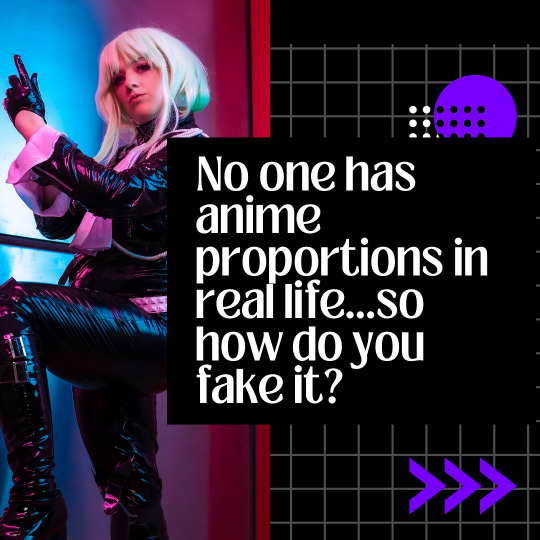
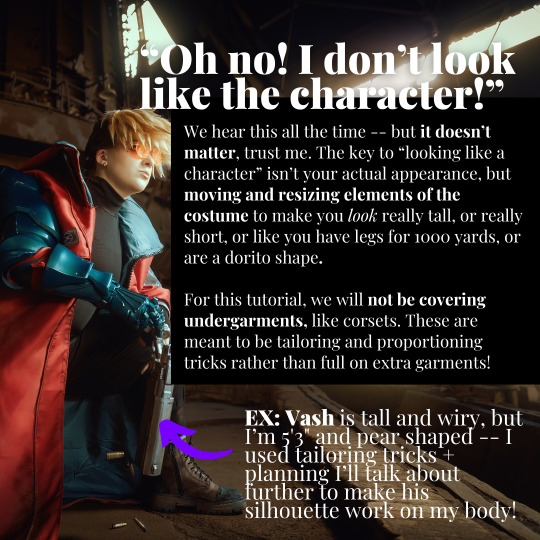
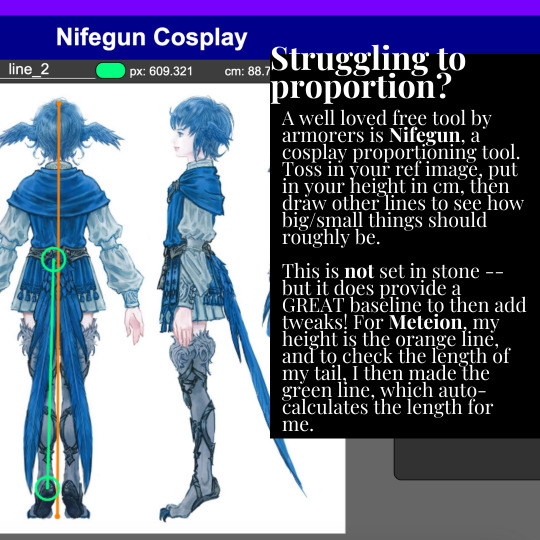

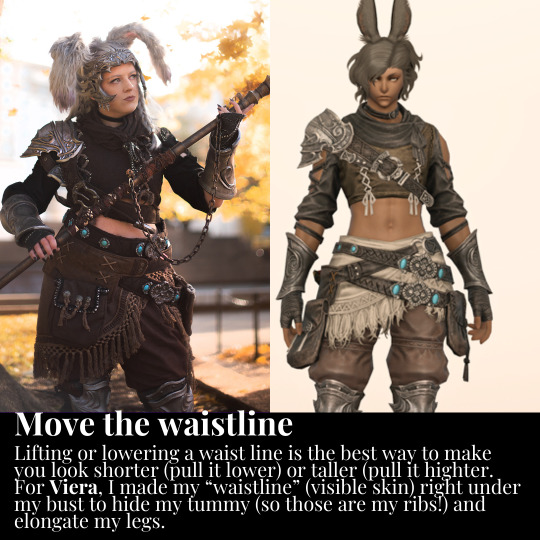




Tutorial on how I proportion cosplays on my very short body!
2K notes
·
View notes
Text
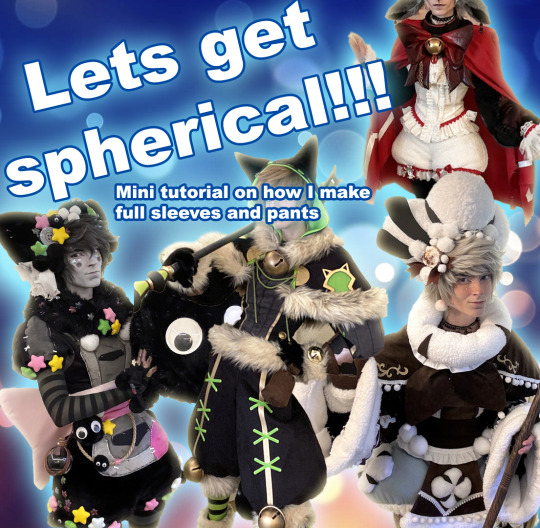
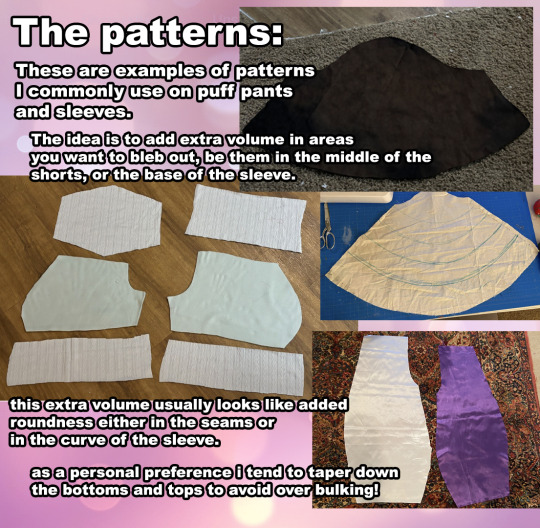
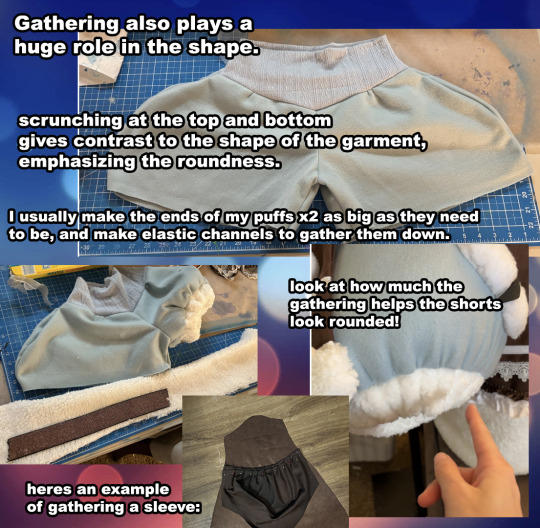
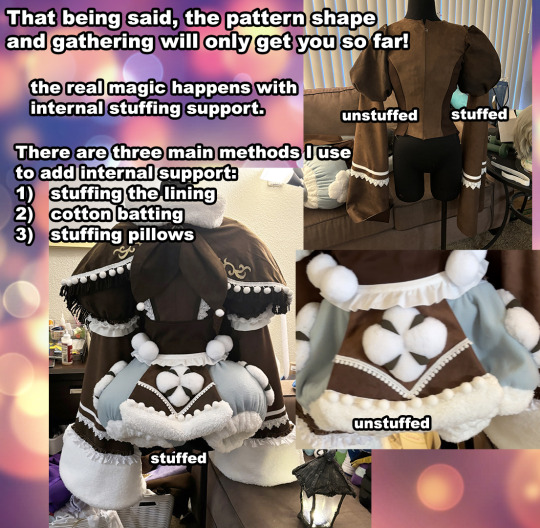
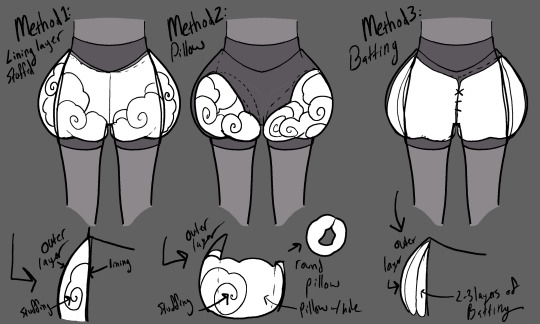
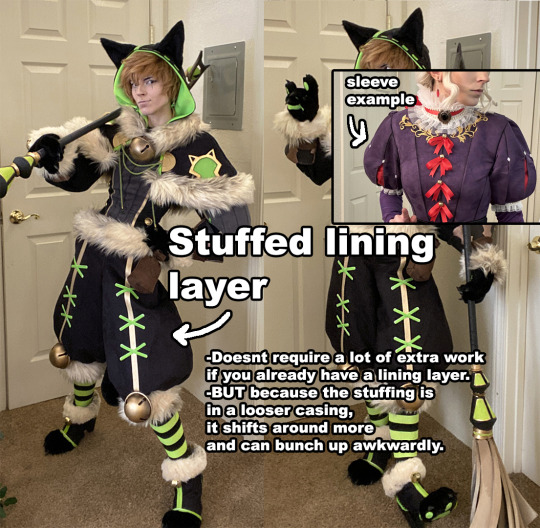
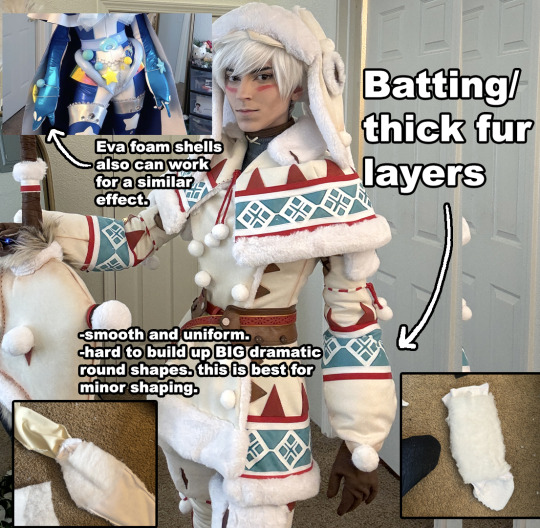
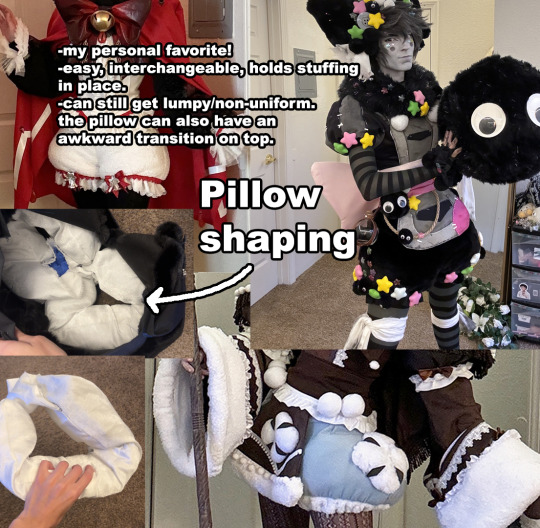
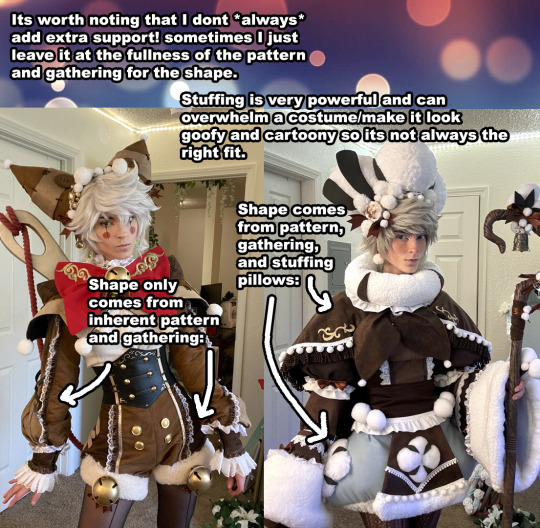
some information about how I shape my cosplays!!!
355 notes
·
View notes
Text
Free pattern: Eevee Evolution Hooded Shrug by Choly Knight
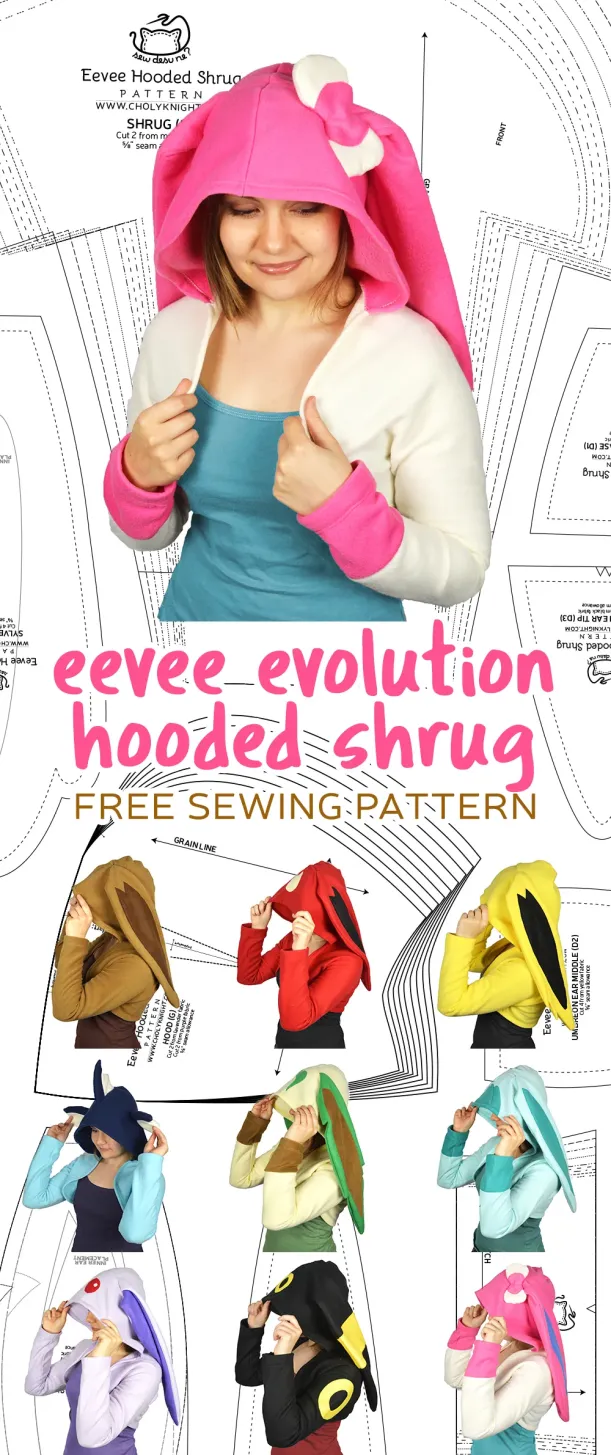
Available from the maker's website here!
The CovidSafeCosplay blog and its admin are unaffiliated with the patternmaker or website, and are simply sharing the resource. Blog admin has not personally tested this pattern. Please thoroughly read the pattern for full instructions.
Do you have a favorite free pattern resource? Share in the comments or via a reblog! Bonus points for those that are free, include image descriptions, or contain detailed tutorials for newbies to follow.
#free sewing pattern#free sewing patterns#pokemon#eevee#eeveelutions#flareon#jolteon#vaporeon#espeon#umbreon#leafeon#sylveon#glaceon#cosplay#cosplay pattern#cosplay tutorial#free cosplay pattern
147 notes
·
View notes
Text
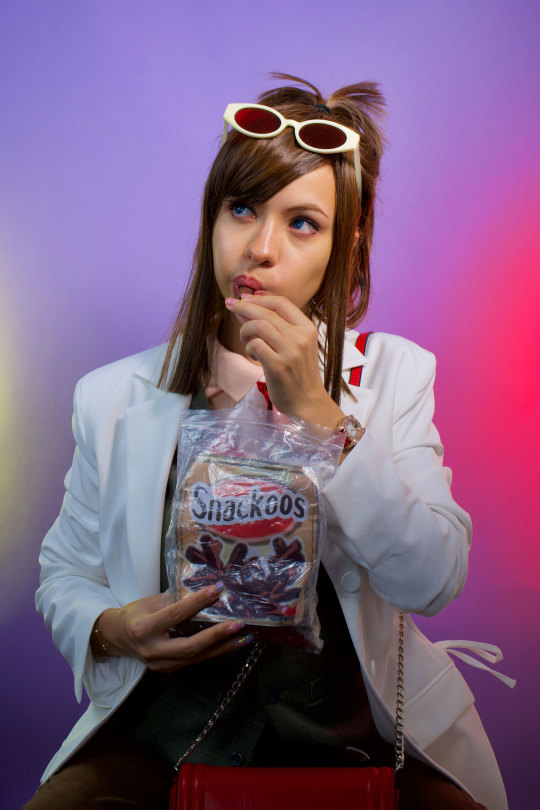
Ema Skye Cosplay VIDEO - The Opal Empress
#ema skye#ace attorney ema skye#apollo justice#the opal empress#game cosplay#ace attorney cosplay#ace attorney art#ace attorney#ace attorney fanart#ace attorney apollo justice#cosplay video#cosplay tutorial#cosplay
695 notes
·
View notes
Text
How to Make: Electronic Wings for Cosplay

Hello Everyone! It's been a while since I last uploaded a written tutorial on here and since I just finished and wore my Dame Aylin cosplay this last weekend it seemed appropriate to jump back in with a tutorial on one of the costume pieces!
Her wings were the star of the show this weekend and I know a lot of people were curious about how I made them! A huge source of knowledge and inspiration behind these wings was this video by Axceleration, I made a few changes to the frame shape and electrical circuitry for mine but her tutorial was a huge stepping stone to give me the confidence to tackle them myself!
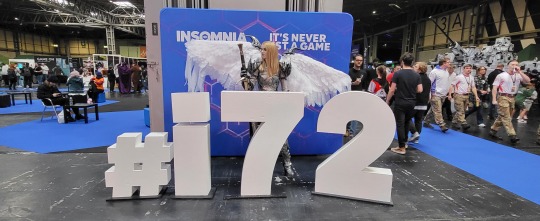
Health and Safety:
When working with Sintraboard (as well as other thermoplastics) it is incredibly important you wear a respirator as well as goggles when heating, moulding and cutting it. The fumes this plastic will give off when heated up are no joke! Make sure you're in a well-ventilated space!
Basic tool safety knowledge is also really important! wearing gloves when using power tools can be more dangerous in most situations, so always be aware of where your hands are vs where the tools are. Always cut away from yourself and take things slowly, don't panic.
Electrical safety! You're working with live wires and circuitry! make sure your hands are dry, you aren't touching the bare wires at any point when they are connected to a power source, and if you choose to solder anything, make sure you're wearing heat-proof gloves and a mask in a ventilated space!
Tools
Wire stripper
Screwdriver and wrench
Dremel - I recommend the Dremel 3000 rotary tool personally! Some essential Dremel bits you'll need for this include, a sanding bit, drill bit (smaller or same size as your screws/bolts), and a small/narrow cutting bit. These will usually come with the Dremel!
Heat Gun (A hairdryer will not get hot enough to heat the Sintraboard!!)
Pipe cutter (alternatively you can use a hacksaw for this!)
Hacksaw
Ruler
Scissors (for cutting fabric straps)
Materials
Heat shrink Tubing
2 core electrical wire
switch (you want a three position, six pin switch, like this one, even better if it has the Screws on the pins! otherwise you'll need a soldering kits to solder the wires to the pins.
2x 8AA 12v Battery Holders
2x 12v Linear Actuators (Mine had a stroke length of 100mm)
21.5mm PVC Pipes (I got 2x 3m Lengths)
2x 21.5mm PVC Pipe straight couplers
6mm 8"x12" Sintraboard
Nuts/Bolts/Screws (I used M5 bolts for the base & Actuator connectors and M6 screws to attach the hinges to the pipes! You'll need Washers for every Nut & Bolt!)
Hinges (I used 2.5cm wide hinges that were skinny but long so they would just about fit along the PVC pipe! 3" gate hinges would work!)
50 metre Polythene Jiffy foam roll (in retrospect this was ALOT of foam, you could definitely get away with maybe a 20-30 metre roll! I now have a load leftover XD)
16 AA Batteries (I used 16 and had enough for the whole day with them on, I think They'd probably be enough for another half a day-full day too! but have spares just in case!)
Webbing strap ( I went for grey to match my base suit colour!)
Buckle - as wide as the webbing strap you use!
3 metres of white cotton fabric (or whatever colour wings youre going for!)
Optional
Zipties (for cleaning up the wires)
Lets Go!
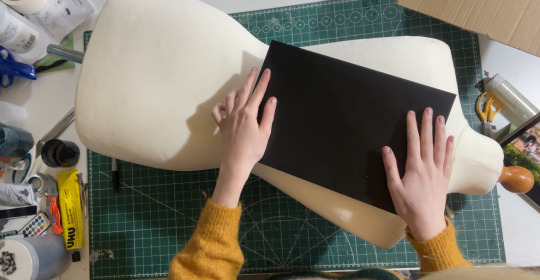
Sintraboard is this wonderfully stable thermoplastic that is relatively easy to cut into (with the right tools) and when heated allows you to mould its shape! I started by using a mannequin and heating the Sintraboard with a heat gun for a few minutes to make it pliable, I recommend using gloves for this part as the materials gets VERY HOT! Press the board into the shape of the mannequin's back, taking note of the edges especially! you want this board to sit as comfortably to your body shape as possible as it makes a huge difference to how long you can wearing the wings for in this backplate is comfy!
Once shaped, I placed it against my back to make sure it was a good fit, heating again and making any alterations I needed (again don't place bright hot plastic to your bare skin! wear protective clothes and wait till its slightly cooler to do this, with the help of a friend!). I then took a hacksaw and rounded the corners, before sanding the edges with my Dremel! Try to avoid cutting off loads, just enough to make things less likely to snag.
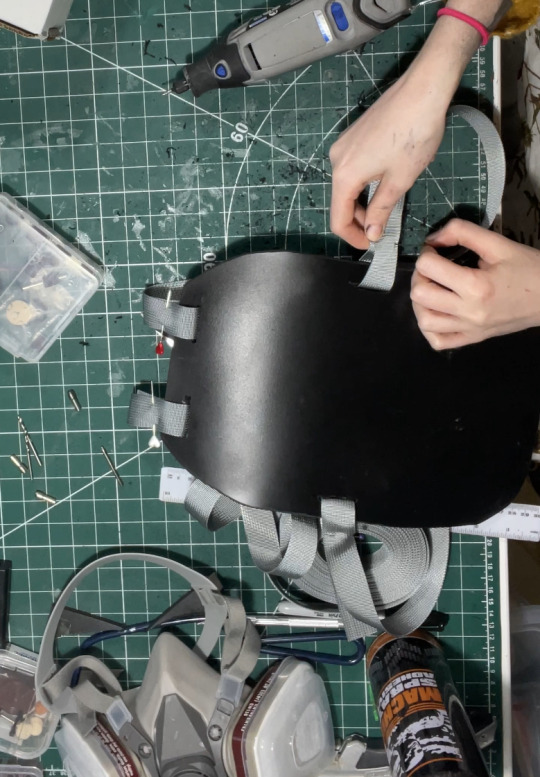
3. I then cut in four holes, wide enough to feed my webbing strap through, two at the top and one on either side below where my arms would sit! I measured the webbing strap by firstly feeding them through the top holes and pinning them, and then bring the strap over my should to everything sits where it should and seeing where the strap hits the side hole and cutting the length there! you'll also want a strap that attaches across the chest, meeting in the centre with a buckle!
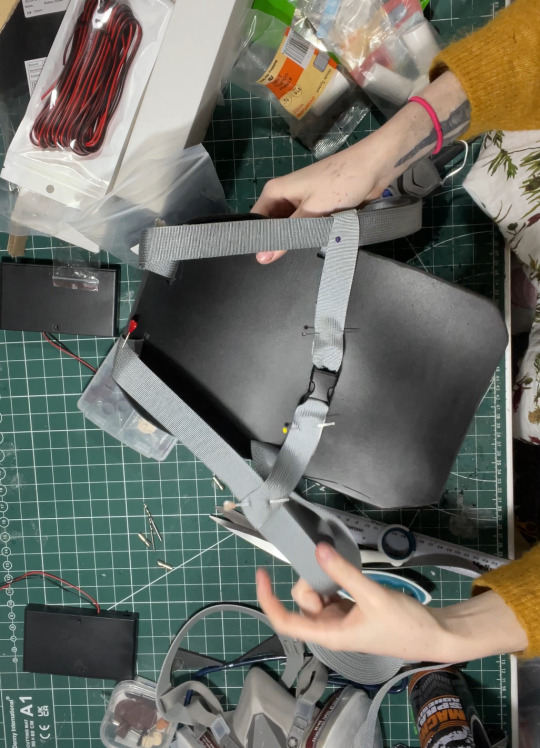
4. After sewing the straps closed I was able to move onto the PVC pipe structure! This may change slightly depending on the finished shape you want but I needed the PVC pipes to come out from inside a breastplate so had a particularly angle as well as character references to work with! I began by heating the pipe over my heat gun and flattening a portion of it under a heavy object so it would sit much more flush against the backboard and sit better underneath my breastplate before moving onto securing the first portion of the structure to the backplate. This mainly involved lots of try-ons and measuring to make sure the angles were correct and symmetrical and was quite fiddly but well-worth the effort! I'll include a diagram of the general shape I went with below:
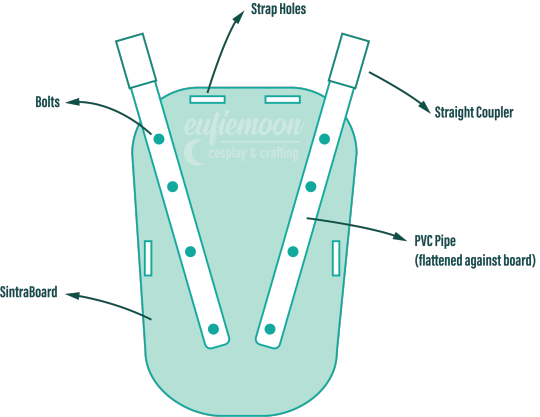
5. I wanted my wings to be relatively modular for ease of travel so I needed to make sure certain portions of them could come away from other parts easily, so I popped a straight coupler on the top of the pipes that were attach to the breastplate, this also meant I could slot the breastplate over these shorter pipes and wear everything correctly! Then these second pipes slot on and at the other end they are attached via hinges to the longest portion of the pipe 'skeleton', Diagram below:
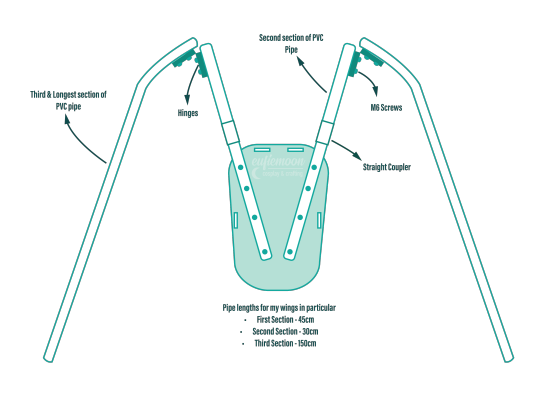
6. Now that the skeleton was put together, it's time for the electrical stuff! It's a good idea to figure out where your circuit is going to lay on the skeleton - consider if you want the battery packs mounted the the backplate or, like me, put them inside the actual wings in removeable pockets for easy access and removal for battery changes. all your wires will go through the switch so deciding where you want to place that is very important! Mine was placed just over my shoulder on the front side, mounted to the PVC pipe with a metal cover I drilled a hole into to slip the switch through and then drill through the pipe.
I've included another diagram below that explains all the electrical circuitry, including which wires go on which pins on the switch!
Important to note: The linear actuators need to be placed and bolted into the PVC pipes at *exactly* the same angle on each side, any slight deviation will lead to the wings going up wonkily! So take your time and make as many adjustments as necessary.
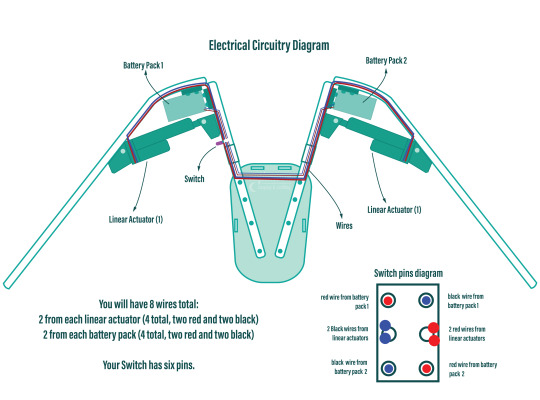
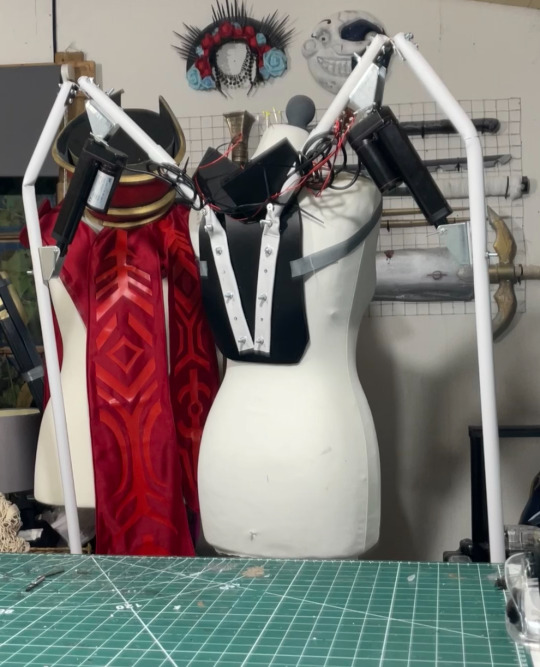
7. You can extend your wires by adding on the electrical wire, just match the colours, and put heat shrink tubing over the connections to hide the live wires! I ended up zip-tying the wires into organised bundles once the wings were done to help keep everything safe from snags.
8. Now its time for the Wings themselves! I drafted my base pattern by just draping the white cotton fabric I had over the wing when it was fully extended. I then pinned the wings to the shape I wanted them to be along the bottom before cutting along the pins. I ran the fabric through my sewing machine to close the bottom edge, leaving a gap wide enough by the wing base so I could slip the wing on and off, closing it with velcro. I also added little fabric pockets inside of these to hold my battery packs, which also connected via velcro for easy removal!
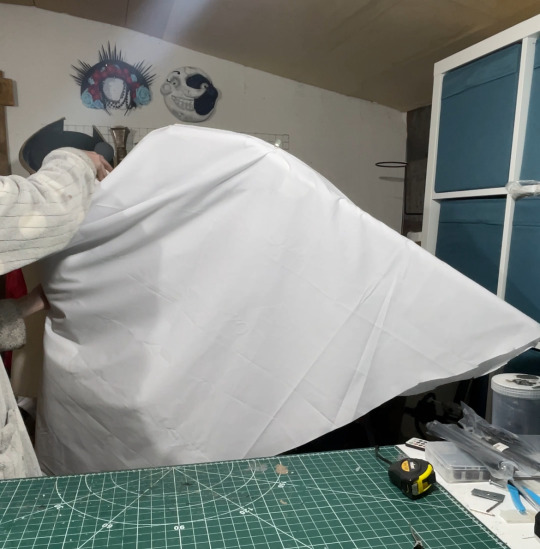
9. Now that I had a wing base I was able to begin making feathers! I cut out a total of 800 feathers out of polythene jiffy roll for these wings, in 6 different styles and using real life bird wings to dictate the shapes I used and where I placed them. I ended up hot gluing every individual feather onto the white fabric base, going row by row until every side was covered, the wing covers themselves are super light because of the foam feathers and they shine light through them in a really magical way!
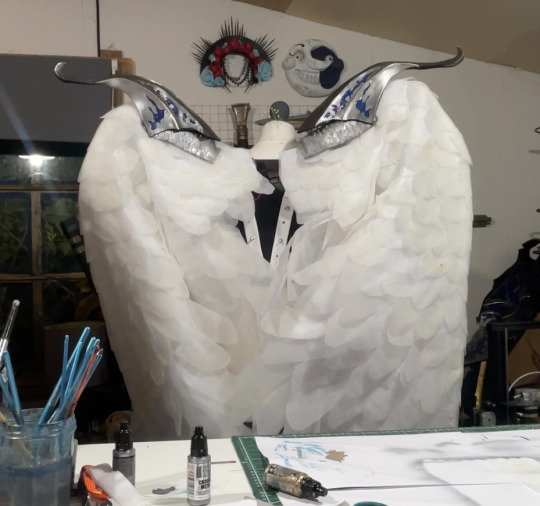
Optional: I also ended up going over these feathers with my airbrush and some super light beige paint to help darken the shadows, this is entirely optional and may change depending on the wings you're looking to make!
When in neutral position and in extended position the wings looks like this:

Mine had a wingspan of about 7ft total when fully extended but when in neutral position they were fairly close to my own proportions! mainly staying behind me and weren't much of a problem in a packed con hall!
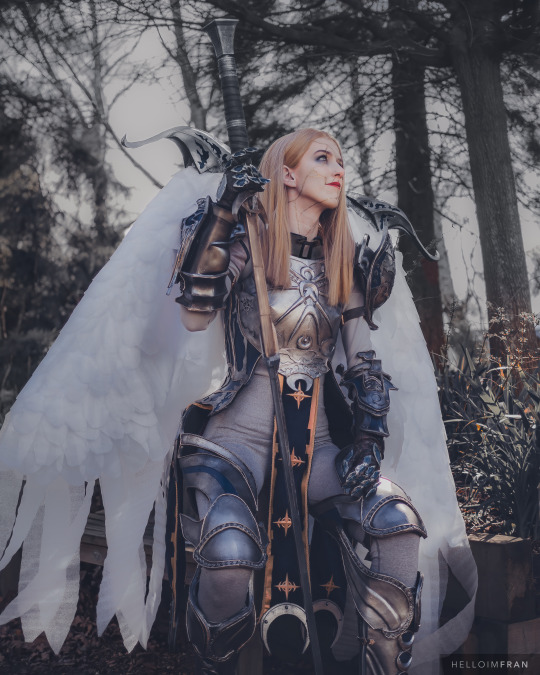
Photo by: Helloimfran (on Instagram and Twitter)
I hope this tutorial helped and if there are any questions about anything in specific don't hesitate to reach out at [email protected] or on my instagram or twitter (@eufiemoon)
Happy Crafting!

#cosplay#cosplayer#cosplaying#baldurs gate iii#baldur’s gate 3#baldurs gate 3#bg3#dame aylin#aylin x isobel#bg3 aylin#cosplay tutorial#Wings#fantasy#tutorial#cosplay help#cosplay tips
158 notes
·
View notes
Text
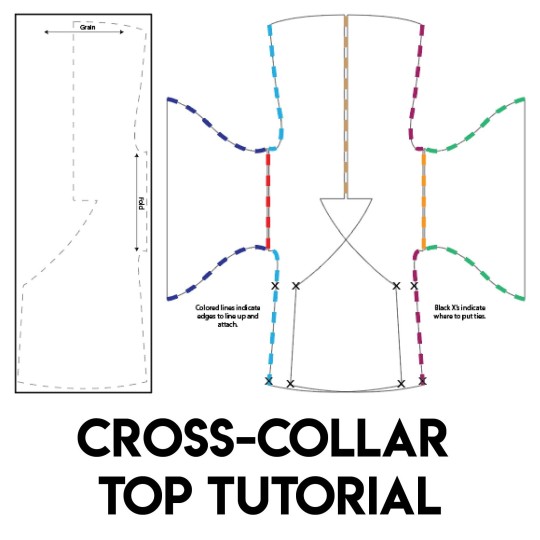
hello to the two people following me :) I haven't shared any patterns I've created before for sewing, but in making some period c-drama and danmei inspired cosplays and my resurging Hanfu fixation realized there aren't many good English resources for sewing cross-collar tops for zhongyi and other pieces so I made my own!
there are three pages but I tried to pack a bunch of information into it and you can download it via Gumroad for free :) I'm also entirely down to help out with patterning for anyone (if any lol) who might want to use this little pattern tutorial.
✨download link✨
253 notes
·
View notes
Text
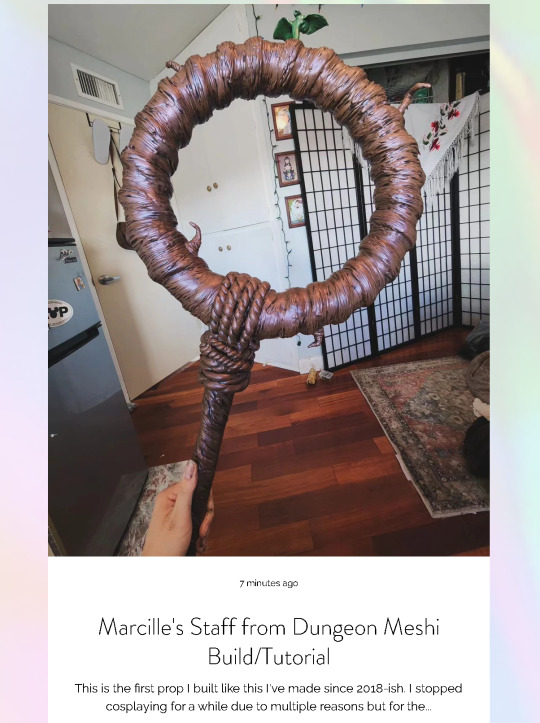
I made a tutorial/build log for how I made Marcille's staff from Dungeon Meshi!
#cosplay#personal#props#propmaking#dungeon meshi#delicious in dungeon#marcille donato#marcille dunmeshi#dunmeshi#dungeon meshi cosplay#cosplay props#tutorial#cosplay tutorial#cosplay wip#my cosplay#prop build#cosplay prop#delicious in dungeon marcille#marcille dungeon meshi
161 notes
·
View notes
Text
hi I’m a very long time cosplayer (20+ years experience) who has chronic headache and migraine problems and this is a post about how to prevent your cosplay wigs from giving you painful headaches! Nobody likes wandering around the con in blinding pain and so hopefully this post will help you reduce the chances of this happening.
1. If your wig is way too tight, don’t use it. Get something with a bigger cap. tbh I often wear slightly too big wigs to reduce the pressure! Find out what brands and sellers sell wigs that are comfy on your head and prioritize buying wigs from them! I made a big master list of cosplay wig sellers a while back so here’s a few you might not have known about. Arda (and its Canadian and European sites) sells by far the biggest wigs, but I personally find Classe the most comfortable for my specific head. It’s all very YMMV and it’s totally possible for a wig to not actually be too small but fit your head in an uncomfortable way (Blue Beard on taobao does this to me every time), so just don’t buy from suppliers that do that. Also consider resizing wigs to be larger! For wig clients with extra large heads I like to nip the edge of the wig right behind the ear where your ear and hair from above will cover it and add in a little godet of elastic.
2. Reduce weight! A heavy wig will make head pain much more likely, so here’s a few tips on wig weight reduction!
A) if your wig doesn’t need a ton of volume and is already very dense, rip out some wefts in the bottom half. Anything on the part of your head from the ridge where your head starts going in towards your neck won’t really show unless your wig is very short and it’ll obviously reduce weight instantly! You can replace any missing volume with light crimping or light heat and tease, or leave the wig as is for a natural and silky look without the unnatural volume of a cosplay wig.
B) if you need more volume in your wig, instead of going straight to adding wefts for more volume, see first if combining crimping with heat and tease at the roots will give you the extra volume you need! Crimping or heat and tease adds volume and if you straight up destroy the fiber in the first two inches from the scalp by doing both repeatedly, it’ll add huge volume without you needing to add extra hair! When I do this I like to heat the fiber near the roots, tease it, let it cool, crimp the teased part, let THAT cool, and then brush it out. You can flat out double the perceived volume in the back of the wig this way!
C) if your character has a high ponytail or high pigtails, consider using clip on ponytails that you can easily remove if you need the weight off your head right the fuck now. here’s two tutorials I swear by for making a short wig + clip on combination look more natural! They’re in Japanese but easily comprehensible if you use machine translation thanks to the clear photography. They also help with spreading out the weight on the wig itself, and if your hair is long enough, using a clip on with a fishnet wig cap and clipping through the wig and into your real hair will also he lp make it more secure and distribute weight more evenly.
if your character has high pigtails
if your character has a high ponytail
D) when you need extra wefts, opt for sewing in wefts rather than gluing whenever possible. Glue doesn’t seem heavy but enough of it can make a wig get real heavy REAL fast.
E) redirecting the weight to your entire head and not just the front hairline will feel lighter and give you less forehead tension, which is one of the biggest causes of wig headache. Toupee clips sewn evenly around the edges and a Wig Fix https://therenatural.com (the name brand one, the knockoffs genuinely don’t work half as well) can help with doing this. A Wig Fix will also let you use fewer pins to keep your wig on, which is another cause of wig headache. Can’t suggest trying those enough. There are also some velvet wig grips out there but I find those don’t work quite as well, but they’re by far better than nothing.
3) make sure your wig is easy to remove. A lot of characters have horns or veils or other head things on top of the wig so make sure those can easily come off if you need a wig break! I’m a big proponent of using wig glue or double stick tape to glue strands (face framing layers etc) to your face for a more natural and more flattering look, but if you get headaches from wigs, keep that glue or tape in your bag so if you have to de-wig for a bit, you can get it back on!
4) take the ibuprofen or whatever BEFORE you put the wig on, and not when your wig is already making your head miserable! It’s like taking the ibuprofen before you wear the horrible shoes for a special event; it’s more effective in advance.
5) what are your normal headache triggers? Make sure you’re doing the work to EXTRA avoid them before wearing a cosplay wig. Stay hydrated. Keep up with your electrolytes. If you have any food triggers, make sure you’re managing them properly.
6) try multiple types of wig cap before deciding which ones to use! I’m a big fan of the fishnet kind because I’m in agony every time I try to use the stocking kind. Some people find relief in doing pin curls under their cap, and @/battleangelgif on twitter suggested doing this with damp hair the night before you wear the wig. There are tons of methods! Stretching out fishnet caps can be done more effectively when they’re slightly damp and that’ll make them pinch less. Experiment with what you like best to keep your irl hair in place and once you find a method you like, go for it! Make that your go-to!
7) always remember: wearing a short wig is less miserable than wearing a wig to your ankles. consider very carefully whether or not you can actually handle that wig that’s as long as you are tall. sometimes you just can’t and that’s okay! reduce the length of any super long haired character to hip length and it’ll be FINE. I swear. It’ll still read as super long and it won’t be as terrible.
8) always remember you can just. take the entire wig and cosplay off if you’re in agony. it’s not worth it. don’t do that to yourself. If the migraine hits anyway, just take it off.
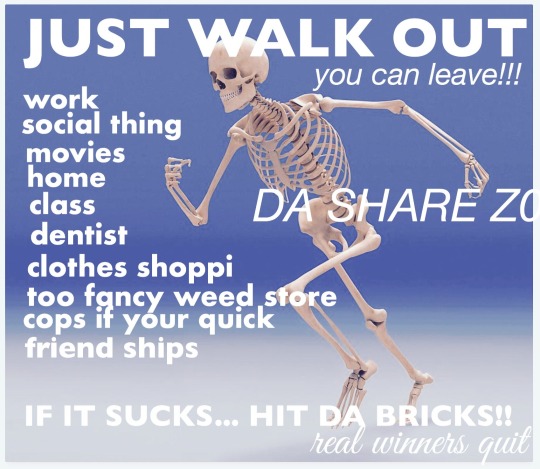
Hope some of this might help you out! Focusing on reducing and redistributing weight is what helps me out the most 😌 feel free to reply or reblog or message with questions and I’ll try and get back to you ASAP!
#cosplay#cosplay tutorial#wigs#wig tutorial#cosplay tips#reducing wig weight#I just want to save everyone from blinding cosplay wig induced migraine#nobody likes head pain at the con#hope I was clear enough hhhhhh#yes this is an expansion of a twitter thread I wrote#y’all get the better version
616 notes
·
View notes
Text
Finding Cosplay Photoshoot Locations: Part 1



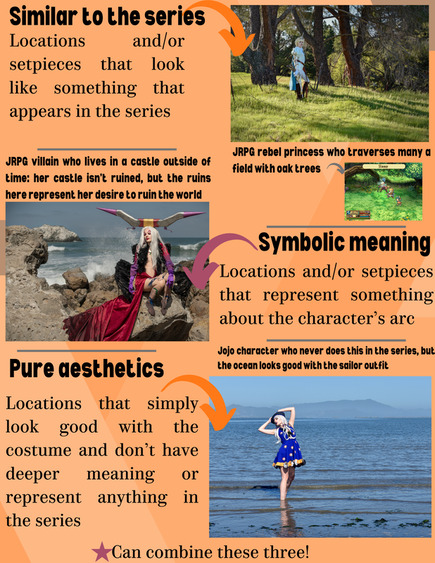
📸Want to do cosplay photoshoots but don't know how to find that perfect place to shoot? This tutorial covers how to brainstorm a location for your shoot, logistical and cost concerns with shoot locations, and how to actually find your dream location.
📸This tutorial can be applied to shoots of all types, including but not limited to self shoots, shoots with friends, and shoots with hired photographers. Self shooting or shooting with friends only requires a camera (a phone works!) and possibly a tripod.
Part 1: Location Types
Coming up with the general type of location you want requires some brainstorming about what you want from the shoot. Think about your specific goals and types of photos you want and how certain types of locations would work for your goal. Remember you can always do multiple shoots for the same costume with different concepts!
For example, if you want big, sweeping shots, you will need a location that allows for wider framing and still looks good, while if you are primarily after shots with closer framing, you can go with a location with only a small usable portion. If you are looking to primarily showcase the costume itself or your posing, a flatter and simpler background works better than a busy background, but if you want cinematic shots or shots where you are existing in the environment as the character, somewhere that can show off the location itself as well as how you exist in it would work better.
Types of Locations
There are three main types of locations for cosplay shoots in relation to the cosplay itself. Of course, you can combine these types and there is a lot of overlap, but thinking of these three location types will help you conceptualize your shoot.
The first type is locations that are similar to something in the series, or an exact location from the series. My cover image is an example of this, where I took photos at the location of the climactic battle of the manga. Most fictional locations don't exist in real life so exactly, however, so think of locations that look similar to where this character might be found. The example on this slide shows a cosplay at a nature preserve with grassy fields and oak trees, which is similar to the locations the character traverses several times throughout the game she is from. This category can also include locations with similar vibes, such as a studio made up to look like a fancy European castle for a character from a series about European royalty, or a shoji screen backdrop for a character who lives in a Japanese-style house.
The second location type is locations with symbolic meaning. These locations showcase something about the themes or character arcs present in the series, and this can be accomplished with anything from specific props and setpieces to the entire background. One shoot I'd love to do with this concept is of Lady Blackpearl staring into a mirror -- this would symbolize her dual personality nature -- or of Lady Oscar wrapped in thorns, with the rose thorns symbolizing her glorious but fragile life. I chose to represent this location type with Ultimecia, a sorceress who wants to compress time so she is the only one who can live in the combined past/present/future, set among ruins. The ruins aren't accurate to the game, but show her crumbling reign marked by the passage of time.
The third location type is locations chosen for pure aesthetics. Obviously all locations are chosen for aesthetics, but these are locations with no deeper meaning and may not represent anything from the series at all. These can range from a simple colored wall backdrop to a sweeping landscape that simply looks good with the colors of the costume. Some examples are the Yasuho Hirose ocean shoot on the slide, where it doesn't represent a particular scene or location in the series but simply looks good with the cut and colors of the costume and the sailor theming, or my Princess White Rose milk bath photoshoot, where again the character never takes a milk bath, but a bathtub full of milk and roses shows off the detail of her floral hat and showcases the opulent nature of a rose-themed princess.
Requirements of your Shoot
Once you have a general concept, think of what is required to fit that concept. This can be as general as specific backgrounds or types of backgrounds to as specific as particular items at the location or particular lighting setups. Some shoots might need specific props, such as furniture to sit or lounge on, and props that won't work in a public location, such as realistic weapons that may cause panic or worse. Also keep in mind any accessibility needs, whether it is an accessible location in general to accommodate a disability or a need that is caused by the costume itself. Check not just the specific area you want to shoot, but how to get there from the parking lot or transit stop. Finally, keep in mind that unsecured outdoor locations, such as a park or beach, are locations where you can't change things about the location and you may encounter other people. Discussion of how to be respectful of such locations is in part 5.
Stay tuned for the rest of the parts~!
Links to other parts: 1 Location Types, 2 Discovering Locations, 3 Indoor vs Outdoor Locations, 4 Location Permissions, 5 Location Logistics
128 notes
·
View notes
Text
Stuck in my room being sick so I made a video about my favorite method of attaching stuff to wigs!
Not super polished but hope this helps someone!
...my sick voice is easier for me to listen to than my normal voice, at least 😅
45 notes
·
View notes
Text
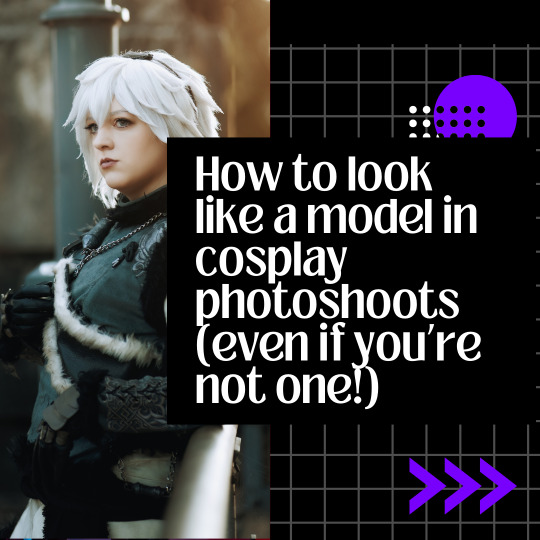
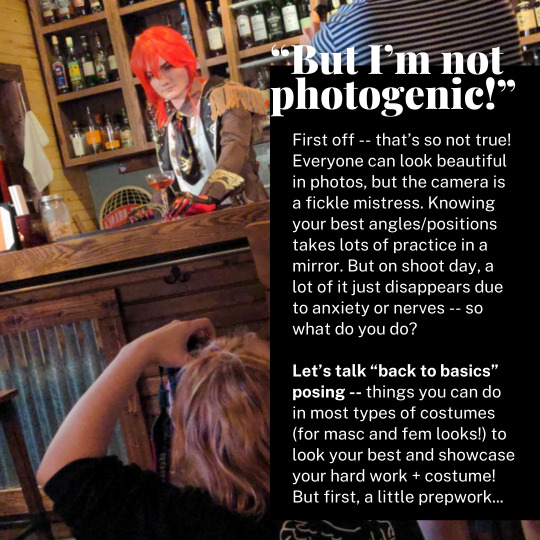
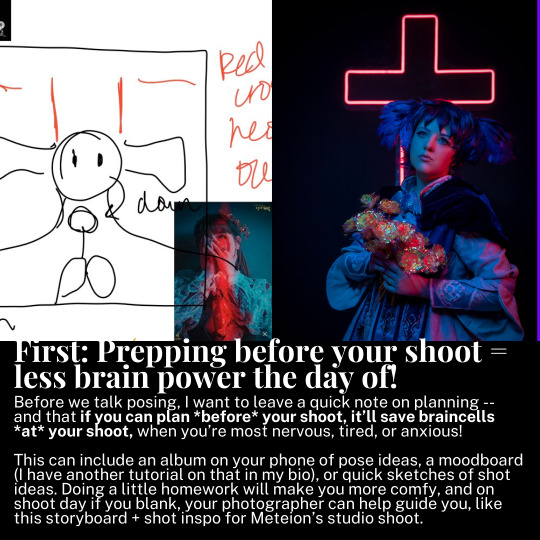
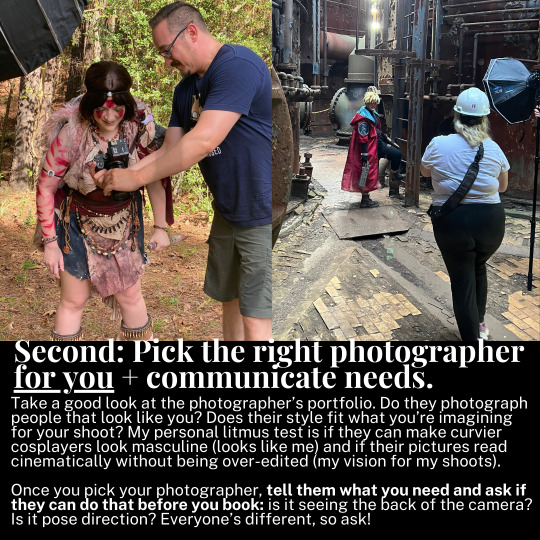

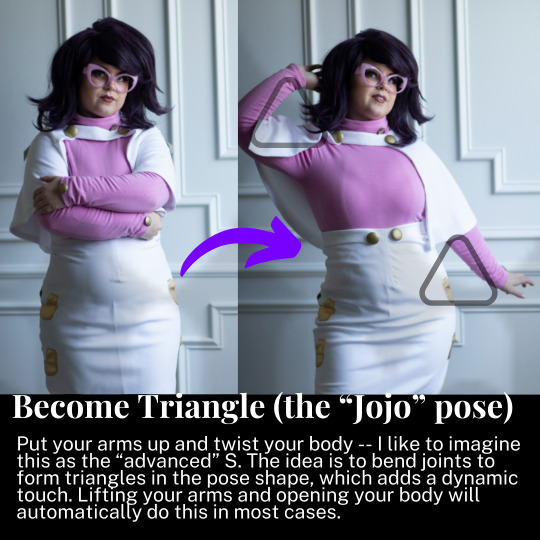

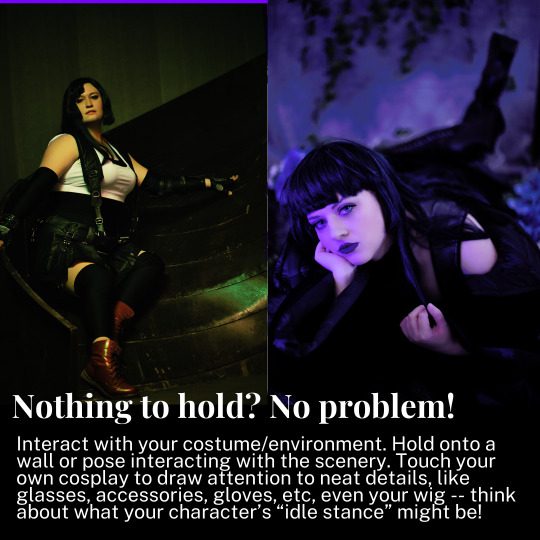
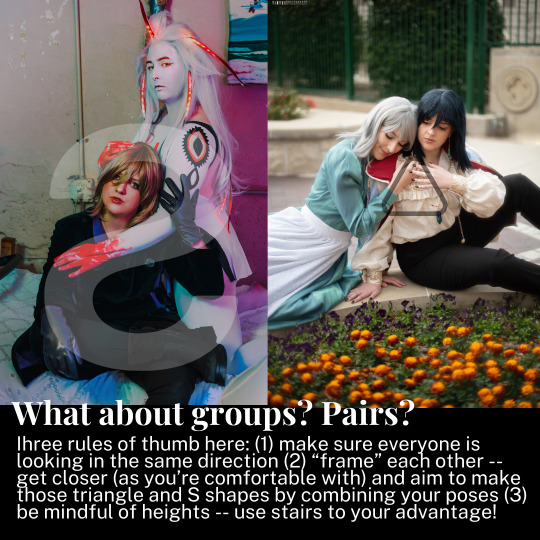
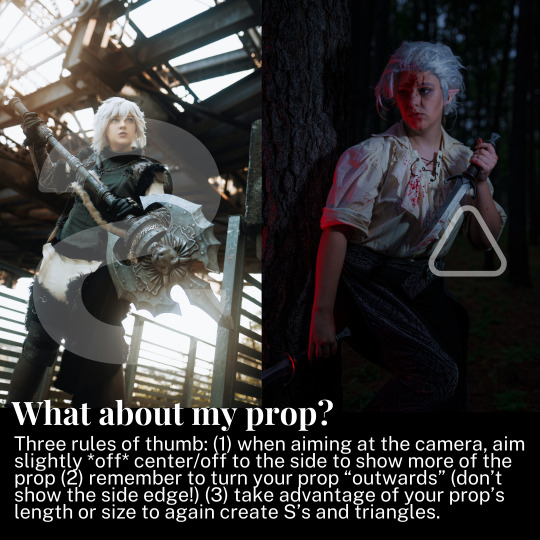
A cosplay tutorial on how to pose for photoshoots, no matter what you look like and what you're wearing -- with example shots to help guide you along.
286 notes
·
View notes
Text
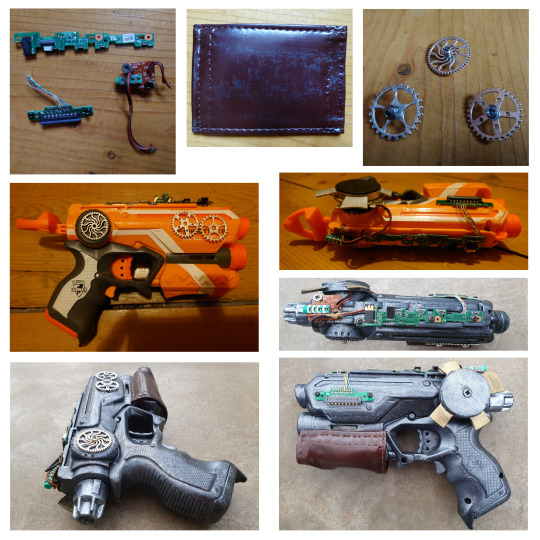
I was going to post a cosplay photo today, but decided to do another of my tutorial type things instead👩🏫. This time it’s for the steampunk handgun I used in my recent Typhoid Mary shoot and also seen in a few of my earlier pics. I’ve found it super useful to have, as it suits a bunch of different characters. If you want to rustle one up yourself, you’ll need these ingredients…
1 x Nerf gun or similar – Choose your gun carefully, as it will dictate what your finished weapon looks like. I went for something small, but chunky, which I picked up cheap in a thrift store (💜 my bargains).
Sandpaper for prepping the gun.
1 x can of black spray paint (or possibly more depending on the size of your gun – tbh I regularly misjudge how much paint I’ll need for stuff and end up having to make extra trips to the craft store to stock up 🚶♀️😩
Silver acrylic paint and 🖌️🖌️ to give the gun a metallic look (or gold if you want to bling out).
Assorted fixtures for decorations – I used some gears left over from another project, a bit of an old speaker and some circuitry from a broken tablet, but loads of other stuff will work. Btw, if you haven’t tried it, it’s super therapeutic pulling bits out of an old tablet, especially if it’s one that used to crash on you a lot like mine😈😈😈
Plastic knob – Replacement for the cocking thingy at the back of the Nerf gun, as this totally gave away that it was a toy. My piece was stripped off a toy gun I used in another project, but you can use whatever’s available.
A piece of leather – Trim for the barrel to add to the steampunk vibe and (hopefully) make the gun look a bit more realistic.
Needle and thread 🪡 – Most of my projects involve sewing in some way, as it’s something I like doing. Here it was used for finishing the edges of the piece of leather.
Fixative spray – Used to try and ensure I don’t accidentally scratch off any paint when I’m using the gun in a typical display of klutziness 🥴
Normally when I do these tutorials, I start rambling on at this point about whatever bits of the project pop into my head, but this time, I’m totally going to be structured about it, so here’s a step-by-step guide…
Sand off any logos and stuff on your gun, as these always make them look toy like. If the gun you’ve chosen has any smooth surfaces, you might want to sand these as well, as the paint will go on better that way. Top tip here is not to use really rough sandpiper or you’ll end up with nasty scratches.
Strip off any fittings on the gun which don’t look realistic and replace if necessary. In my case, this included replacing the thing for getting the gun ready to fire (I’m sure there’s a technical term for this, but it beats me what it is). I screwed the new bit into the end of the mechanism, so it still works, which is pretty cool.
⛫💨 Spray the gun matt black to prime it, plus any of your fittings which need to match. Usually this has to be done in a couple of stages, as if you’re working on a table or something you won’t be able to turn anything over until it’s dry. Also, no matter how good a surface looks at the time, you often come back to find the paint hasn’t covered something properly 😠😠. Here’s another tip… go off and do something else between coats rather than waiting around for however many hours it takes the paint to dry 💡
🎨 Add the metallic distressed look with the arcylic paint. For this to work, you need to dust the paint on super lightly. I usually wipe my brush on a bit of paper each time I dip it in the paint to get rid of the excess.
Once the paint is dry, attach your fittings. The trick here is to try to make them look like they have some kind of purpose and aren’t just window-dressing. Glue is the easiest way to stick things on, but I use bolts and screws when possible 🪛🔧, as these are more secure and allow gears and stuff to spin around if you want them to. If you’re using leather like me (or any other material), you’ll probably want to sew in a folded overedge before attaching it to stop it fraying 🪡.
Touch up any damage you did to your paintwork when working on step 5. Maybe you’ll be luckier than me, but no matter how careful I am, there always seems to be some.
⛫💨 Spray on your fixative for protection. This should be done in steady lines with the can about 30 cms away from the gun. It’s best to do a few coats, sometimes working from side to side and sometimes from top to bottom, so you get good coverage. My tip for this stage is to shake the can well before use and do a quick test spray first to make sure the fixative is coming out evenly.
Pick up the finished gun and start rocking it /̵͇̿̿/’̿’̿ ̿ ̿̿ ̿̿ ̿̿💥
So there you have it. Hopefully if you’re new to projects like this, it will give you a good starting point. I think you get good results for some pretty easy steps. Let me know if you found it useful or if you have any questions 💬, and stay tuned for more cosplay stuff.
Luv your friendly neighborhood cosplayer, Christabel ❤️🧡💛💚💙💜
ko-fi.com/christabelq instagram.com/christabel.simpson/ deviantart.com/christabelq
#steampunk gun tutorial#cosplay tutorial#steampunk gun#costume design#prop design#cosplay gun#hand guns#steampunk#cosplaygirl#cosplayers#ukcosplayer#cosplaygirls#follow for follow#follow back#followback#followforfollow#like for like#likeforlike#typhoid mary cosplay#typhoid mary
42 notes
·
View notes
Text
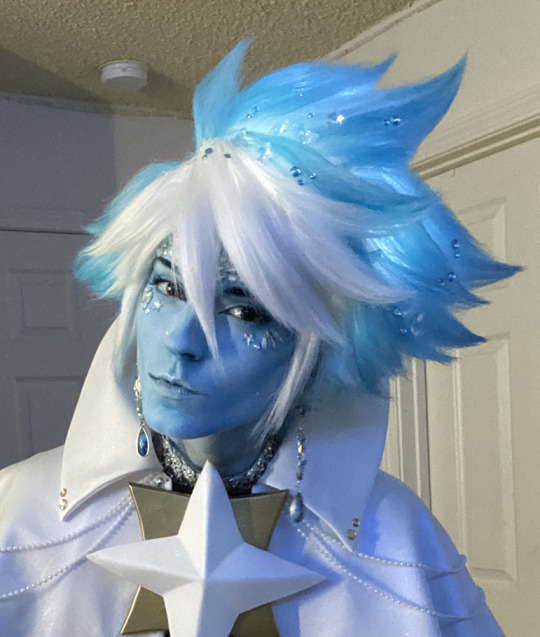
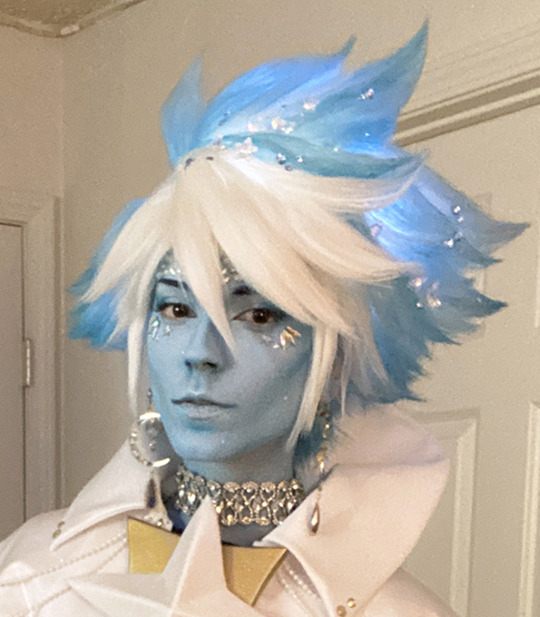
How I made my glowing stardust cookie wig with translucent spray paint and button battery LEDs
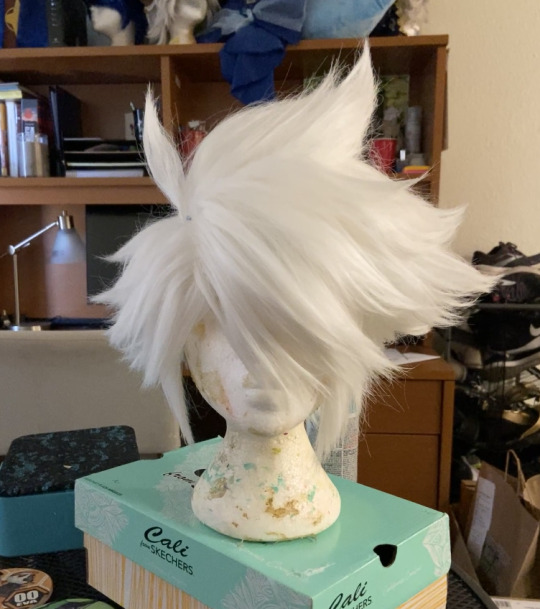
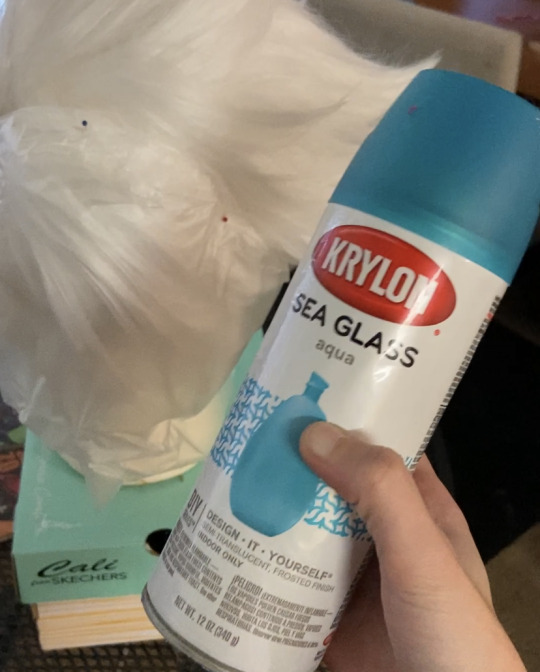
I started with a pure white arda wigs jaguar that was already fully styled since you will need all the shapes to be set before adding color. To style it, I did the classic "heat the fibers upside down, tease via backcombing, brush them out, heat and tease again, brush out...again" method that is formally outlined in my karna tutorial. You dont have to have your shapes perfectly locked in before adding in color since you will be brushing it out once more, but you will need all of your teasing and heat training to be done before adding color.
Stardust Cookie's wig involves leaving the bangs pure white and the back sections blue. There are a million ways to do this (start with a blue wig and add a white bang front, airbrush color, dye wefts and sew them together, etc) but the method that was the most economical for me involved using krylon translucent spray paint. I know using spray paint on a wig sounds scary and i would not use an enamel or fully opaque spray paint on a wig, but the krylon translucent spray paint is shockingly soft, flexible, and goes on in light coats.
To keep the bangs white, I pinned down some cling wrap all around the bangs and made sure the line was snug. at this point I very gingerly began applying spray paint to the back sections of the wig. I did this in very light coats at a distance of about 18 inches from the wig. Honestly right after spraying, the fibers were still soft and the coverage was as good as i was expecting to get, but i did take a hog bristle brush and thoroughly combed out the fibers after this stage. This helps break up any strings and more evenly distributed the color.
This method works well if you want a soft color that does not need to be perfectly uniform. And I knew since I was adding lights below, that the color coverage itself didn't matter a whole lot, so long as it was translucent, didn't have any major streaks or clumps, and light could get out smoothly.
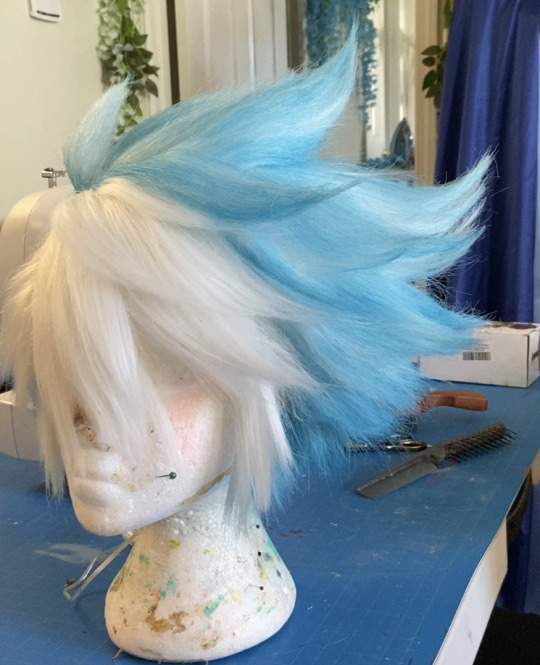
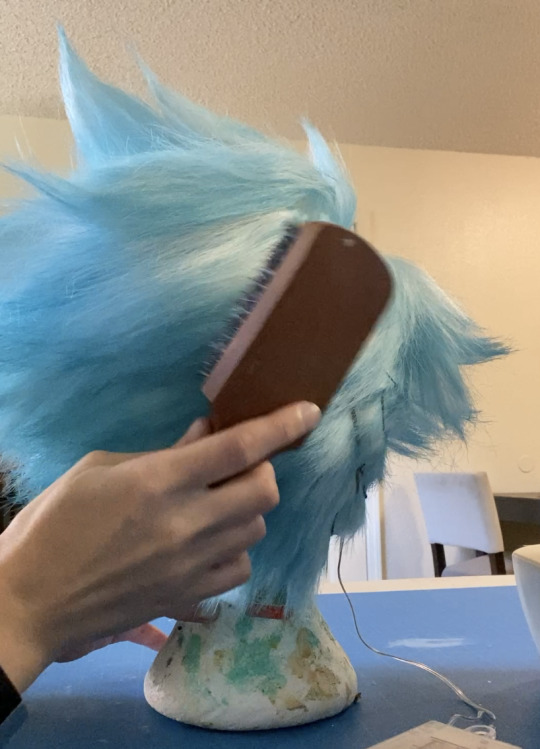
To add lights to the wig, there are 4 button-battery 30-LED fairy light packs glued into the underside netting of the wig. Always be sure to check if your LED wires can withstand hot glue heat before application (but most standard LED packs can withstand a low heat setting.) I did not have any problems with the heat of the wig + my body heat causing problems with the LEDs after being worn for several hours. These lights provide a diffuse, background glow throughout the wig and can be seen through the blue color. the below image of the wig only has lights underneath the netting (only one pack on for that image).
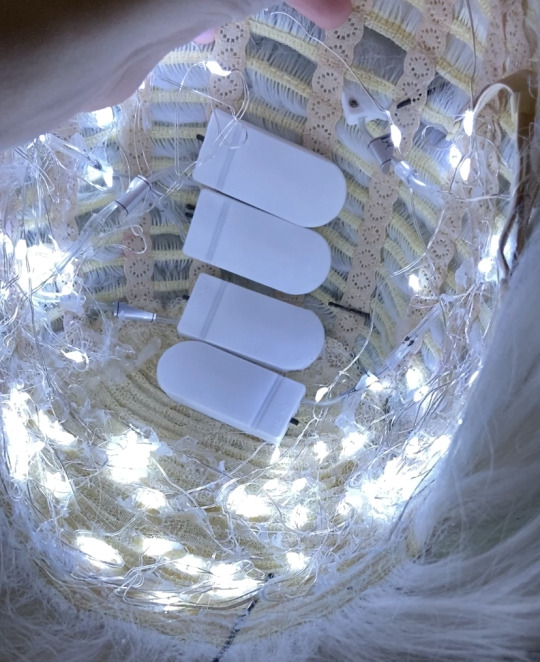
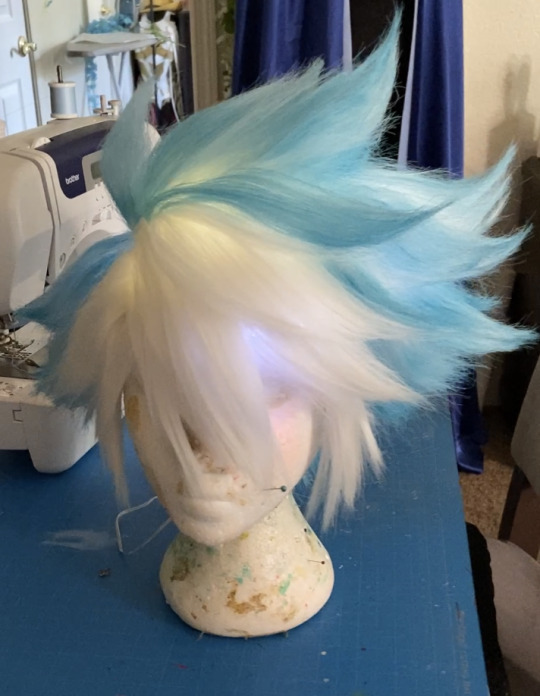
To light up the upper parts of the wig, there is one pack of LEDs threaded through the teased, textured bases of the spikes. Because these lights are on top of the netting and going through the textured sections, they scatter off of the teased hair and provide illumination to the higher parts of the wig. below is an image of the wig with only the single "top" lights lit.
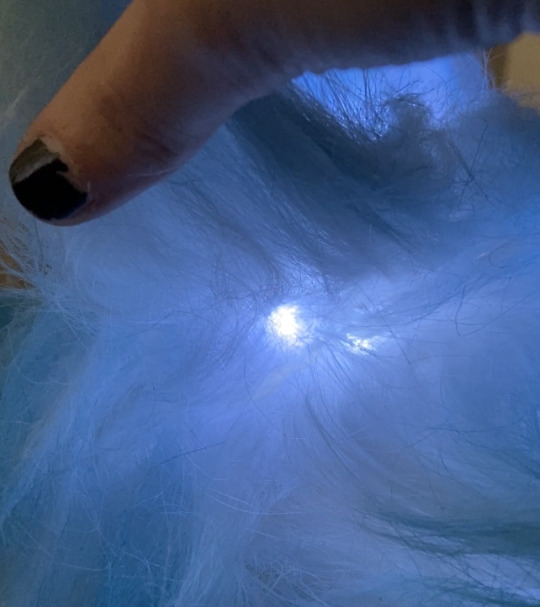
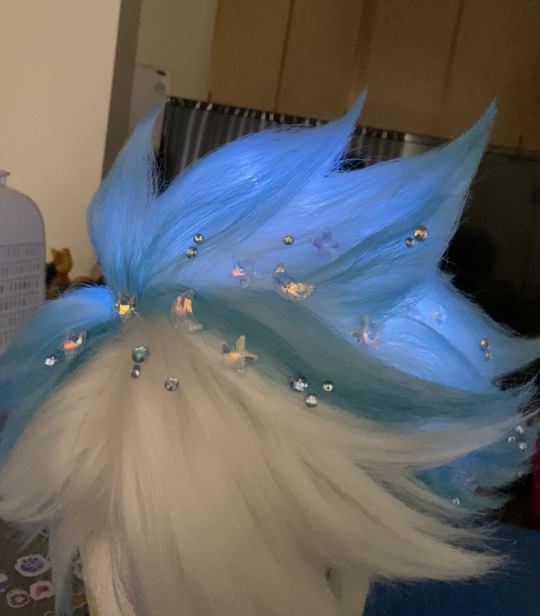
and that's how I made this wig! Other than that the rhinestones and other accessories were just glued on w/ hot glue. This wig looks nice in person and on camera and is stable. Granted its a little uncomfortable since you can feel the wires and the battery packs ngl but i've certainly worn worse. You can use hairspray on top of the translucent spray paint in small amounts, but in general i would proceed with caution since if nothing else, it may make the fibers look particularly stringy (which is why i highly recommend heat-set styles for this application over hairspray-set ones)
Believe me you can go pretty far with a "let me just slap some LEDs in there with a bit of glue" attitude when it comes to adding lights to stuff.
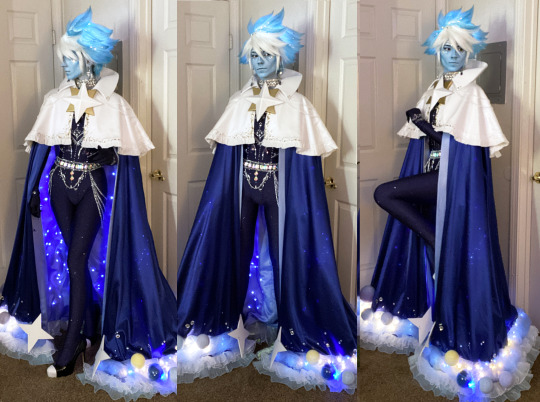
284 notes
·
View notes
Text
Free Pattern w/ Tutorial: Simple Belt Bag by Sew Very Crafty
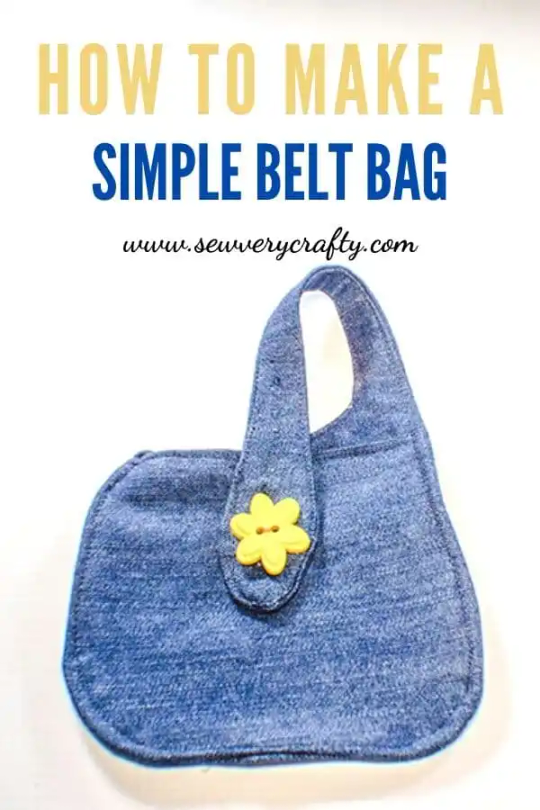
This free tutorial, found here, teaches you how to make a simple belt bag!
The CovidSafeCosplay blog and its admin are unaffiliated with the patternmaker or website, and are simply sharing the resource. Blog admin has not personally tested this pattern. Please thoroughly read the pattern and tutorial for full instructions.
Do you have a favorite free pattern resource? Share in the comments or via a reblog! Bonus points for those that are free, include image descriptions, or contain detailed tutorials for newbies to follow.
#free sewing patterns#free sewing pattern#sewing pattern#cosplay tutorial#sewing tutorial#sewing#originals#original post#id in alt text
69 notes
·
View notes
Text
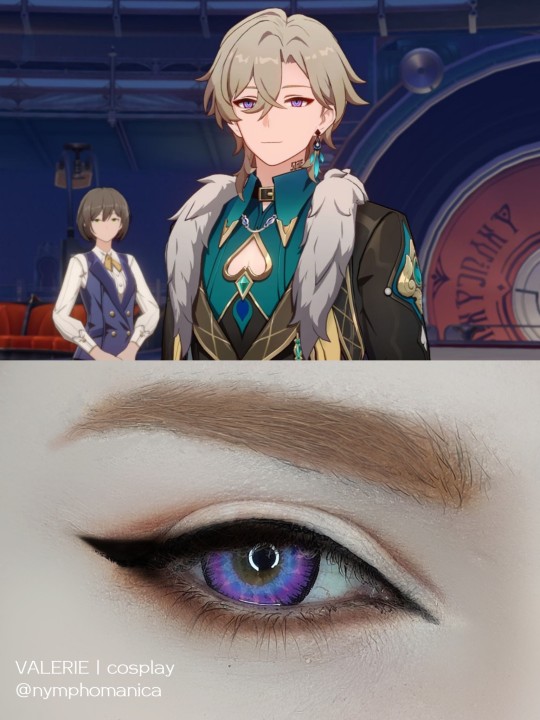
Aventurine - Honkai: Star Rail
#cosplay#cosplayer#makeup#cosplay makeup#cosplay tutorial#honkai star rail#honkai sr#hoyolab#hsr aventurine#aventurine honkai star rail#star rail aventurine#hoyoverse#hoyocreators
20 notes
·
View notes
Text
Here is a little tutorial to make Shadowhearts shoulder pieces out of foam
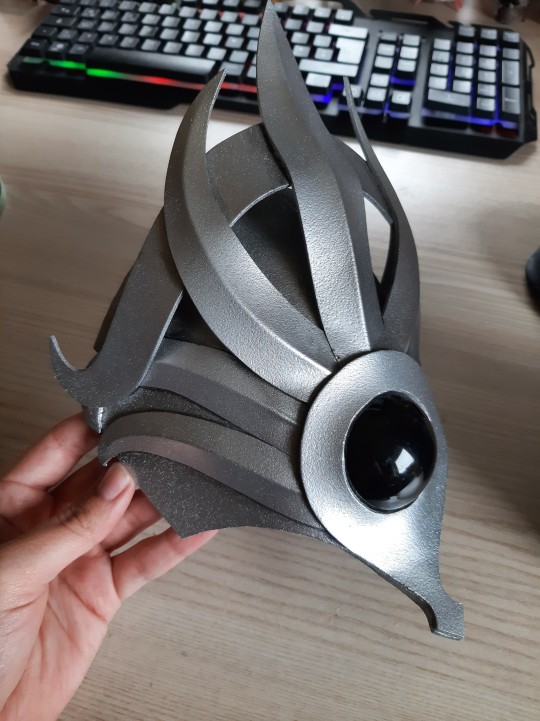
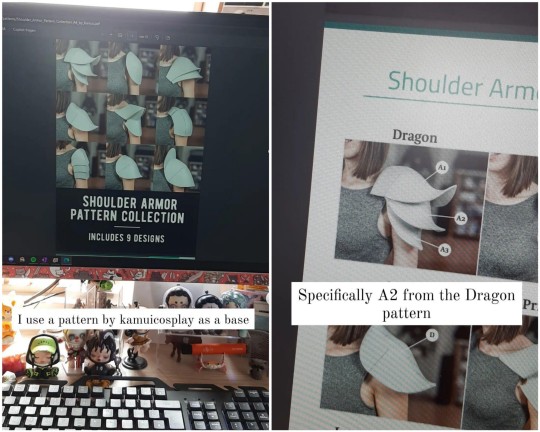
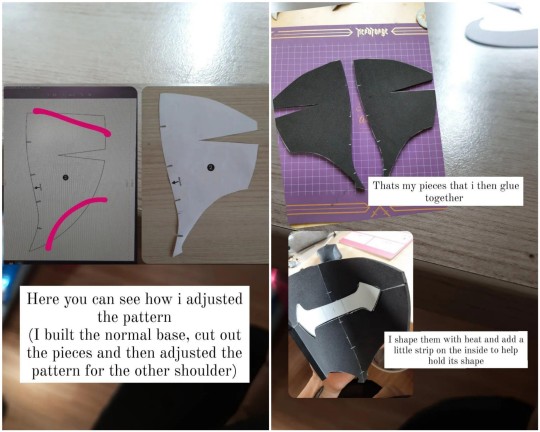
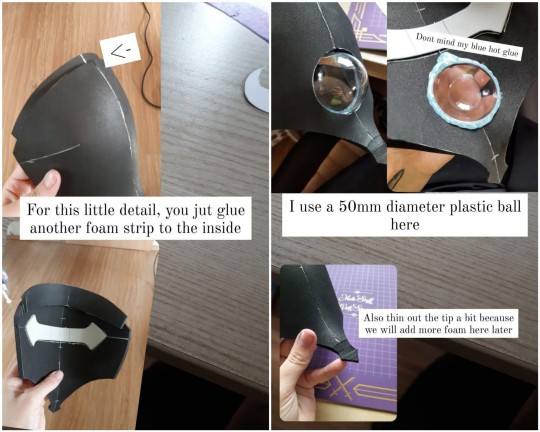
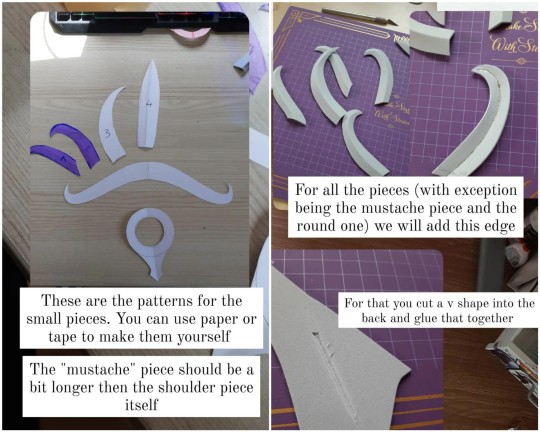
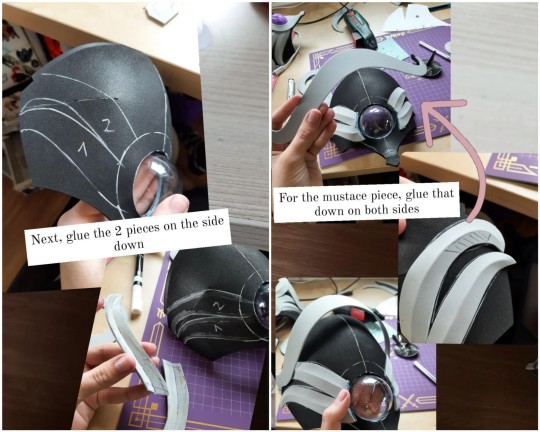
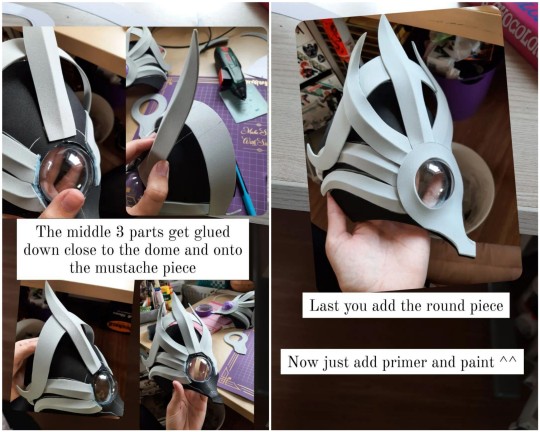
Hope this helps someone out there looking for a lightweight way to make these without a 3d printer ^^
I used low density eva foam of 5mm (the black foam you can see here) and high density eva foam of 2mm.
I used contact cement as a glue for most of it, but also some hot glue here and there.
58 notes
·
View notes